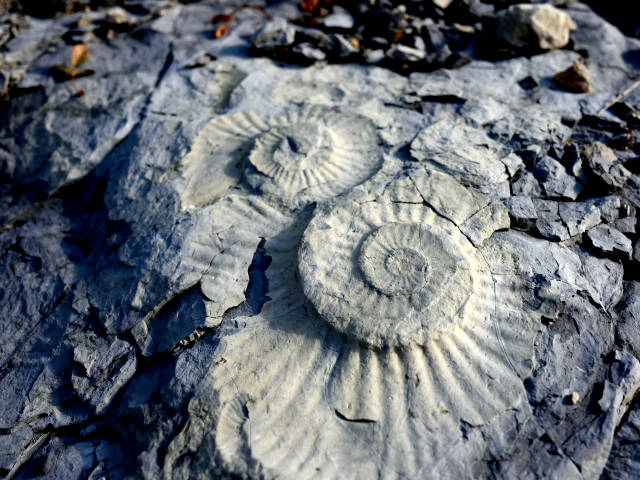Dream Cottages Discount Codes – Latest July 2025 Offers!
Discover all of the latest Dream Cottages discount codes, voucher codes and offers for 2025 right here! Offering over...

The Jurassic Coast is one of Britain’s most fascinating coastlines. From fossils to chillies and everything in between, there are many interesting facts about the Jurassic Coast.
Located on the Southern Coast of England, the Jurassic Coast is one of the most popular tourist destinations in the UK. With a history pre-dating the dinosaurs, Dorset is full of interesting facts that can be a talking point on your trip to the South West.
Take a trip along the prehistoric cliffs and discover 6 fascinating facts about the Jurassic Coast…

There are many UNESCO World Heritage Sites throughout England. However, the Jurassic Coast is England’s only natural UNESCO World Heritage Site.
The impressive coastline has over 185 million years of history and provides a unique insight into the UK’s prehistoric heritage. It is this cultural significance that put the Jurassic Coast on the UNESCO World Heritage list.
Spanning over 95 miles, the Jurassic Coast has been a UNESCO site since 2001. With so many stunning locations to visit along the coastline, you are best staying in a Jurassic Coast cottage close by to enjoy the experience.

Jurassic Coast fact number two. The coastline is one of the best places in the world to explore the prehistoric ages. With over 185 million years of environmental change, the Dorset coastline is one of the best places to spot fossils without any special tools.
Head down to the water’s edge as the tide goes out and see if you can spot any impressive fossils. There have even been giant woolly mammoth bones found across the Dorset coast.
While you may not come across your own mammoth bone, you are more likely to see the fossils of molluscs and sea creatures.

Throughout its long history, the Jurassic Coast has had many different landscapes. During the Triassic period, this Dorset coast used to be a desert. That then became a tropical sea throughout the Jurassic age and swampland in the later years.
The landscape changes are the reasons behind the abundance of fossils found on the coastline. As the land has changed, the layers have built up to create what we can see today. Among these layers, you can find anything from dinosaur bones to prehistoric forests.
Find the prehistoric forest in Dorset on your visit to one of these Lulworth cottages.

With the creation starting in 2001, the Dorset Naga is one of the hottest chillies in the world. Consistently measuring higher than 650,000 Scoville units, the chilli pepper comes under the same bracket as the Carolina Reaper and the Ghost Pepper.
If you can get past the heat of the Dorset Naga, the chilli has a fruity aroma that can change the depth of flavour. However, if you are going to cook with this fiery chilli, be careful, remove the seeds and wear gloves whilst chopping.
The last thing you want is to rub your eyes with the Dorset Naga on your hands.
You can try growing your own Dorset Naga chillies and treat your friends to some of your famous hot sauces. You can pick up seeds at the Dorset Naga chilli online.

Mary Anning was born in Lyme Regis in 1799. She would wander down to the beach with her dog Tray and sell fossils to upper and middle-class visitors.
Some of the fossils found by Mary helped to lead the way in the discovery of prehistoric dinosaurs. One of her notable discoveries was a giant Plesiosaurus in 1823. The discovery was widely accepted after some opposition, leading to a huge scientific discovery.
She continued to make groundbreaking discoveries for the remainder of her life and left a lasting impression on the renowned scientist Charles Darwin. You can still see some of these impressive specimens in London’s Museum of Natural History.
Over the years, many authors and scientists paid homage to Mary Anning’s life. Most notably, Terry Sullivan wrote:
“She sells seashells on the seashore,
The shells she sells are seashells, I’m sure,
So if she sells seashells on the seashore,
Then I’m sure she sells seashore shells.”

In the quiet town of Poole, the harbour is one of the most impressive natural harbours in the world. In fact, many proclaim it to be the second largest in the world. However, there are a few contenders for that title.
Uses of the natural harbour date back thousands of years, and in 1964 the remains of a 200-year-old boat were found near Brownsea Island.
During the medieval period, Poole Harbour was crucial to the trade from countries in Europe. However, it also became a haven for lawless pirates. That was due to old Harry Haye.
History would have us believe that Harry Haye was a pirate for the people. He would often ransack cargo ships heading for France and Spain and bring the goods back to the people of Poole. He was a legend to Poole residents and a pirate to the victims.
Nowadays, people use the harbour for water sports and personal watercrafts such as jet skis. The area is also perfect if you are looking to get out and explore some of the region’s beautiful countryside.
Dorset is a fantastic place in the south of England. There are so many interesting facts about the Jurassic Coast and the Dorset region. Find out more Jurassic coast facts and start planning your perfect holiday to the Dorset coast.
Image Credits – Luciano Roth Coelho – (CC BY-SA 3.0); Fred Inklaar – (CC BY-NC-SA 2.0)